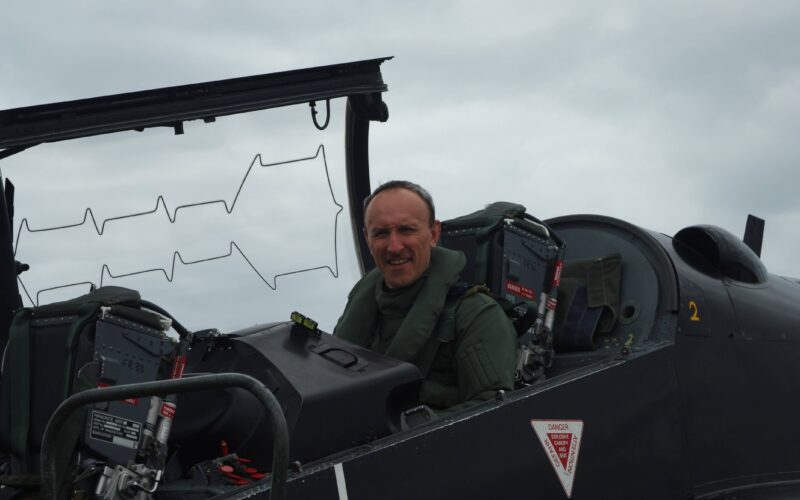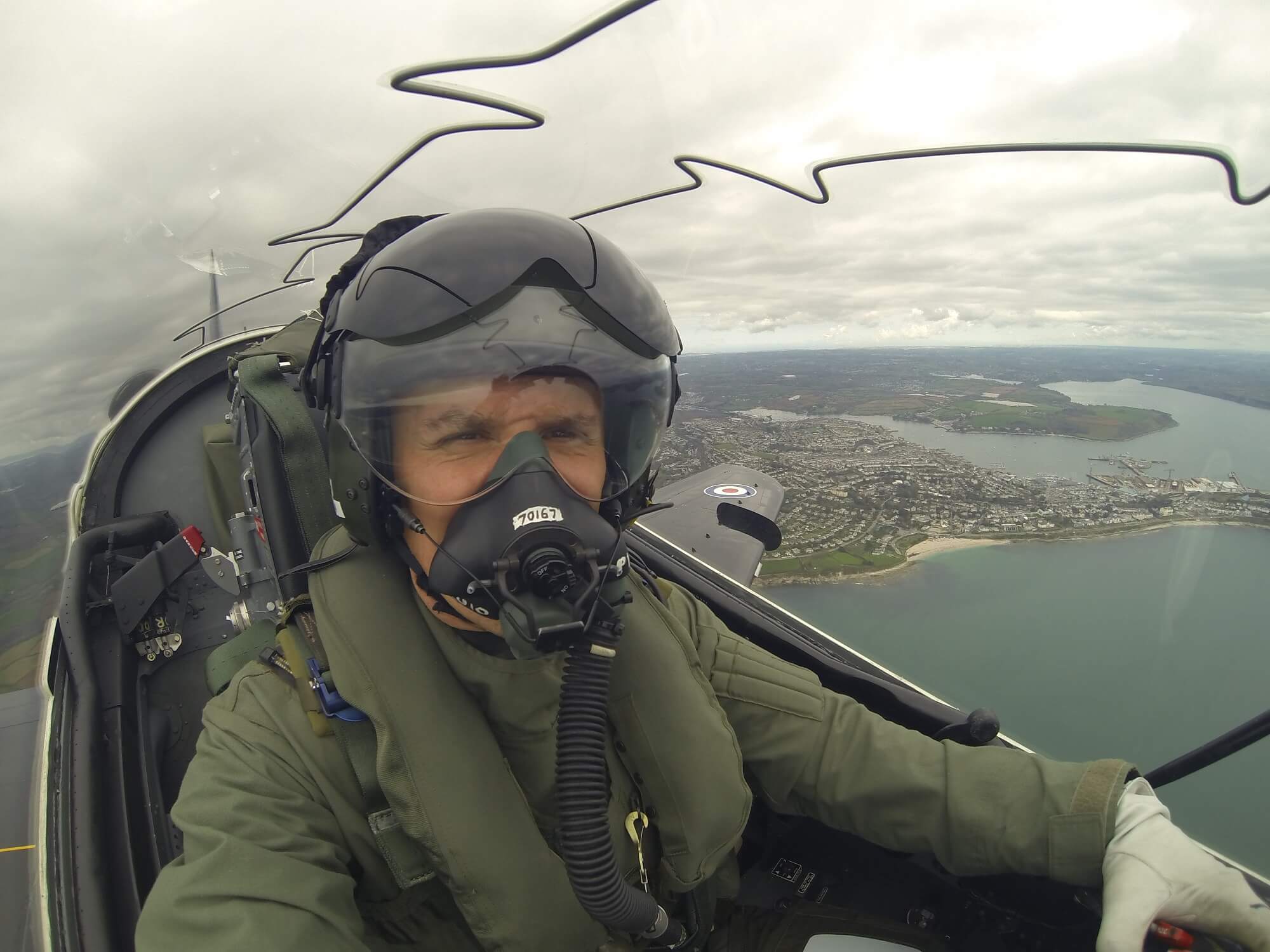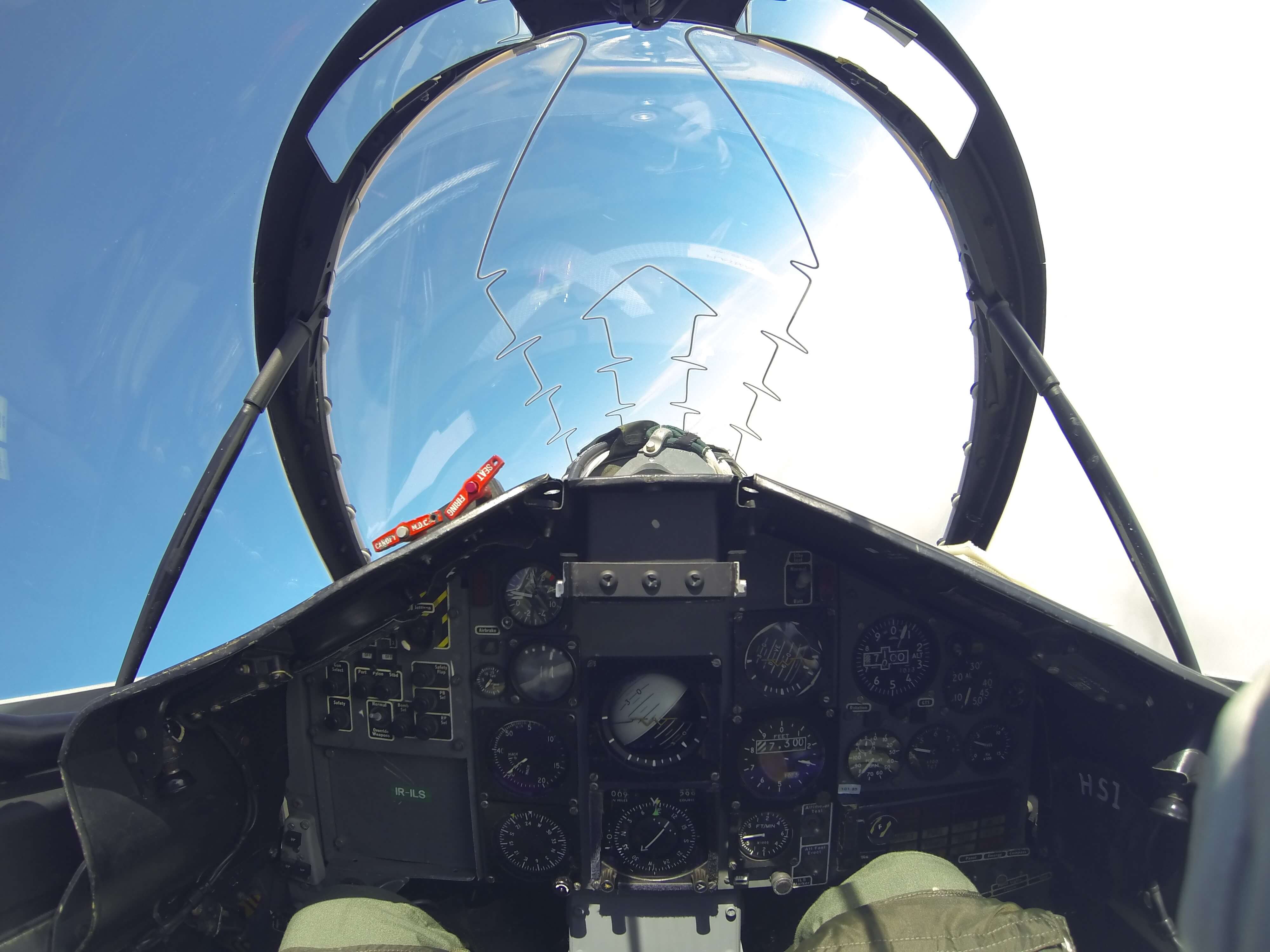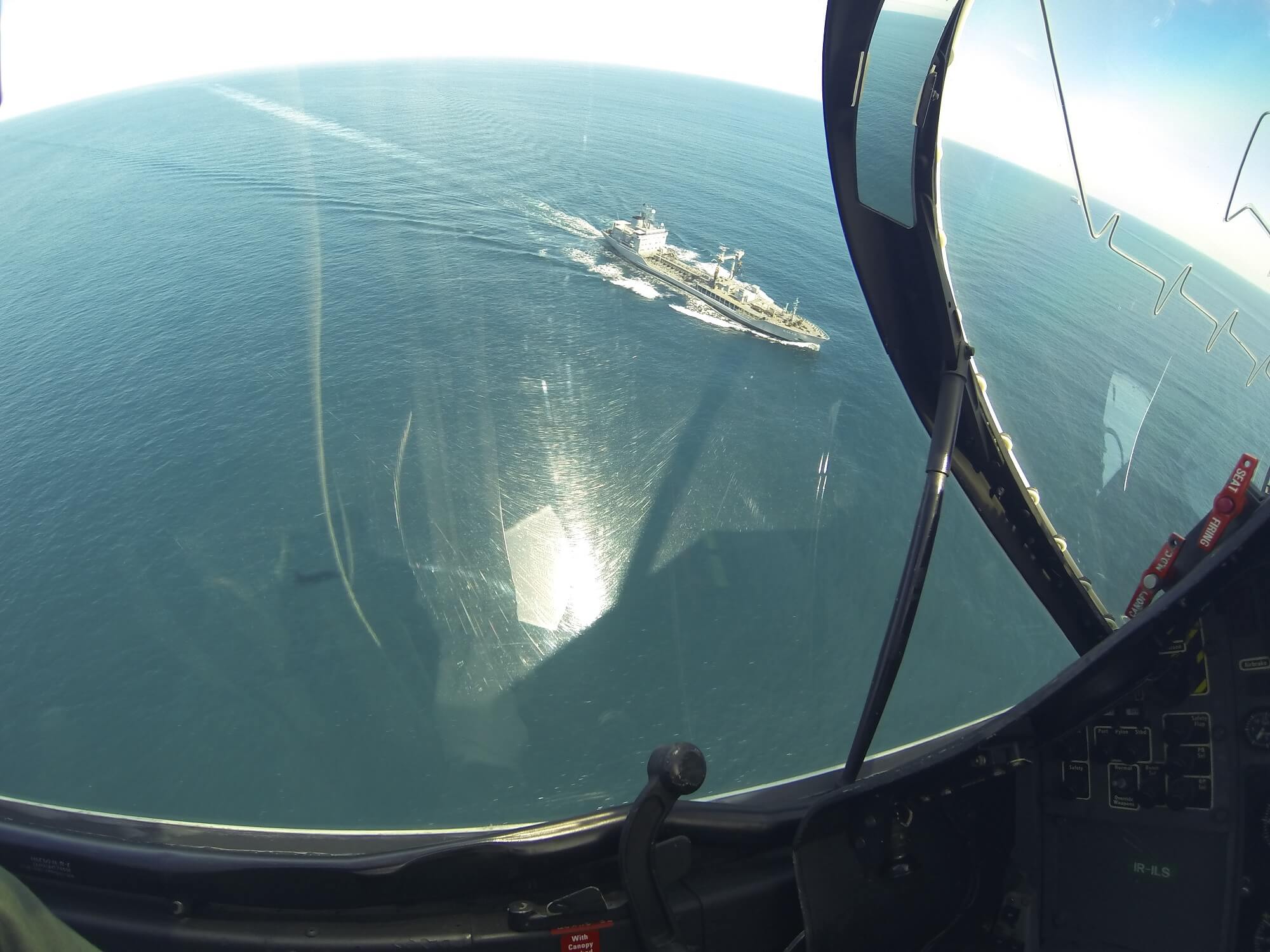All of Britain’s Hawk T1 aircraft, except for those operated by the famous Red Arrows aerobatic team, are due to retire at the end of March 2022.
The jet trainer will have served in a variety of roles for an astonishing 46 years. It entered service in 1976, having first flown two years earlier as the Hawker Siddeley Hawk, long before the company merged into what is now known as BAE Systems.
Around 1,000 Hawks have been built in various guises, making it the world’s best-selling aircraft of its type. It has provided a stepping-stone for generations of fast-jet pilots, forming the bridge from elementary flying training to the frontline. Unusually for a British-made aircraft, it was even sold to the United States for training Navy pilots as the T-45 Goshawk.
RAF aggressor unit 100 Squadron, let by Wing Commander James Taylor-Head since 2020, will mark the jet’s retirement later this month. With almost 1,100 hours on the aircraft, Taylor-Head first flew the Hawk in 2001, later becoming a flying and weapons instructor on 19(F) Sqn and 208 Sqn where he taught fledgling flyers basic tactics, including air combat, close air support and low-level shooting and bombing.
He explains that the single-engine Hawk established a reputation for its simplicity and reliability and is equally happy skimming the ground at low-level in the valleys or pulling 8G in simulated combat high above the clouds.
This makes for a fun aircraft to fly. I was lucky enough to experience it myself a few years back, flying with the Royal Navy’s 736 Naval Air Squadron, which provided a ship support role, training those at sea how to handle airborne threats.
On the surface, the Hawk is very easy to fly, being no more difficult than a Cessna to steer around the sky, even for a private pilot like me with a handful of jet hours. Because it is a jet, the aircraft has amazing performance but to get the best out of it requires skill, flair, and finesse – something that young fighter pilots need to develop and exactly what the Hawk was designed for.
The Hawk looks as sleek today as it did in the 1970s and it feels like a sports car. You are at one with the jet, and not just because you’re physically plugged into its systems via your oxygen and communications pipes, inflatable G-suit to counteract the forces of gravity on the body and the lanyards strapping you tightly to its rocket-assisted ejection seat. The controls are also well-harmonized.
As test pilot Andy Blythe told me back in 2014: “It gives you all the sensations and all the buzz you get from a frontline jet”. It’s little wonder, then, that former Hawk pilots fondly remember the sense of achievement they gained from completing a mission.
My flight took off from Royal Navy Air Station Culdrose in Cornwall, on England’s south west coast. I was flown by the then Commanding Officer of 736Sqn, Lieutenant Commander Tim Flatman. Since promoted to Commander, Flatman now heads the UK’s F-35 Operational Conversion Unit, 207 Squadron.
Back then, cocooned inside the tandem cockpit and flying helmet, the noise of the Rolls-Royce Adour engine was muffled, a quiet hiss was the only sign that the jet was alive.
Cleared to begin rolling, Flatman advanced the throttle, powering up the engine, the nose dipping towards the tarmac as the Hawk strained against the brakes. With a nod of the head, Flatman signaled our wingman to release the brakes and we were off, speed building swiftly with wheels rumbling. Quickly airborne, the wheels clunking into their wells, the formation climbed up to circuit height.
The view from the rear seat of the Hawk is superb. Designed as a trainer from the off, the instructor’s position enjoys a commanding view over the nose with just a small portion of the front ejection seat and pilot’s helmet visible in front.
Inside, instruments and controls revealed the Hawk’s vintage. With traditional ‘steam-powered’ gauges, chunky switches and battleship grey paneling, there is even a pop-up stopwatch mounted into the black coaming. As this aircraft predates the digital age, it’s back to using a map and a compass as the main navigational tools. The newer RAF Hawk T2 brings the cockpit up to date with multi-functional screens and even a heads-up display. The control column is studded with switches for guns, bombs, and trim, while the throttle is a cylinder sticking up from the left side of the cockpit, with a prominent switch for the air brake.
Our training mission that day was to act as so-called ‘red air’, simulating enemy aircraft and missiles ‘attacking’ Royal Navy and allied shipping out at sea to help train sailors in defending themselves from aerial threats.
This required us to storm in at just 250 feet above the sea and at 450 knots (517mph). At this height the sensation of speed is overwhelming, the wave tops whizzing past beneath your wings. I vividly remember feeling as if I could dip my fingertips in the water below.
Gathering pace, the Hawk arrowed towards our first target, a Royal Navy supply ship, which quickly passed under our nose. Flatman rolled the Hawk into a left-hand turn and pulled into the maneuver. My G-suit inflated as we yanked 4G, and my stomach and legs were gripped in an uncomfortable vice. Looking left our shiny black wing tip appeared to be almost grazing the sea as we carved past the ships below in a wide turn.
The g-force meant my whole body felt four times heavier than normal in the turn, and I struggled to hold up the camera against the incredible force pressing my limbs downwards. As we levelled off, the G receded, and we lined up for another target run.
The next ‘attack’ saw us linking up with a Falcon business jet. This time we acted as a missile ‘launched’ by the Falcon. Flying in very close formation before starting the attack run some 100 miles out from our target ship, we dived to simulate a sea-skimming missile, accelerating as we sped down to 250 feet again.
Ahead of us the ships began evasive maneuvering, wheeling around surprisingly tightly as they tried to shake off the threat by turning head-on towards the incoming missile, presenting their smallest radar cross-section.
Attack sequence completed, Flatman took the jet up through the clouds for some formation aerobatics and to give me a chance to try and fly.
Linking up once more with Blue 2, we tried out some steep turns, wingovers, and barrel rolls.
With the classic exchange “You have control!”, I took the stick as below us the emerald sea along Cornwall’s golden beaches glimmered in the sunlight. The Hawk felt light and responsive to the merest touch.
For someone who has spent most of their time in propeller aircraft, it’s strange to feel no gyroscopic effect and the rudder pedals are mere footrests. Excess power from the jet engine means the aircraft can do pretty much anything you desire.
With fuel running low, we zipped back to the airfield for a run-and-break into the circuit and a landing. I’ll confess to feeling relieved because, at close to an hour and a quarter, that’s a long sortie for a fast jet novice and I was starting to feel both tired and nauseous.
Having flown overhead Culdrose in formation, we broke into the circuit with a fast roll and pull as the throttle came back and airbrake deployed. Landing gear is dropped at around 200 knots and flaps selected for the glide down towards the main runway.
In my little Chipmunk taildragger, I’m used to flaring to cushion our arrival. But in the Hawk, the aircraft is flown onto the runway, making the touchdown more emphatic, with a hefty bump as the undercarriage absorbs the impact.
Once back in our parking slot, the Hawk is quickly shutdown and, sitting in the cockpit with my helmet off and canopy open, only the whine of the gyros disturbed my thoughts as I tried to process the exhilarating experience I’d been through. The aircraft is certainly fun and rewarding to fly, akin to a classic sports car with enough to keep even frontline veterans like Tim Flatman interested.
It’s a shame that soon there’ll be no more opportunities to have another go, at least not in the UK.




